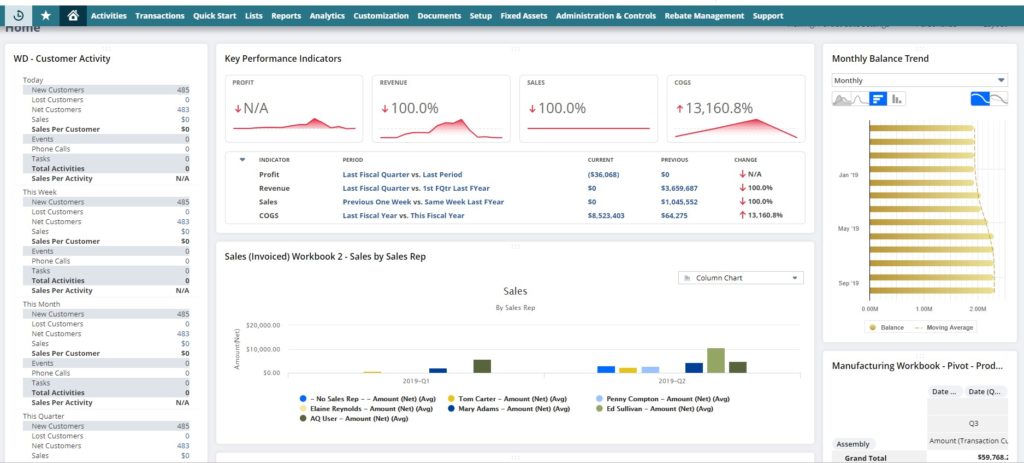
A user for whom an access token is to be granted authorizes the request token and explicitly consents that the application can access NetSuite data. The request token URL generates an intermediate (unauthorized) request token. With the TBA authorization flow, integration developers begin the process to grant access tokens in their application. NetSuite RESTlets now support two types of authentication Restlets require authentication in order to allow access for external systems. To use a RESTlet you must create a script and deployment record based on the script. RESTlets are most commonly used for Adding, Deleting, Manipulating or Retrieving data in NetSuite from an external Application. There are 4 supported HTTP methods for RestLet in NetSuite, GET, POST, PUT, and DELETE. With RESTlets you can do anything that can be achieved with SuiteScript and then tailor it to your specific integration needs, making it perfect for building APIs to use in external applications. The main difference between Suitetalk and RESTlets is that RESTlets offer developers ease of adaptation, control and more customization. This allows users to have complete control over external applications accessing their RESTlets. They are a highly secure mode of integration meaning that authentication is essential for any application trying to access a RESTlet. RESTlets, which we will discuss in further detail in this blog, are another option for integration that provide stateless communication between the client and server. RESTlets, however, require the knowledge of SuiteScript for their implementation. SOAP web services are appropriate for integration scenarios where you regularly need to bring large amounts of data into NetSuite or send large amounts of data out of NetSuite. SOAP web services provides programmatic access to NetSuite data and business processes through a SOAP-based services API. REST web services provide a REST-based interface for interacting with NetSuite. The NetSuite REST web services provide an integration channel that extends the capabilities of SuiteTalk. The CSV import process saves time and prevents errors by submitting data in a CSV file. If(!::IsNullOrWhiteSpace($_.Comma-Separated Value (CSV) import is the most commonly used method for transferring small to medium-sized data sets from other applications into NetSuite. $oAuthParamsForSigning.Add("oauth_version",$netsuiteParameters.oauth_version) $oAuthParamsForSigning.Add("oauth_signature_method",$netsuiteParameters.oauth_signature_method) $oAuthParamsForSigning.Add("oauth_token",$netsuiteParameters.oauth_token) $oAuthParamsForSigning.Add("oauth_consumer_key",$netsuiteParameters.oauth_consumer_key) $oAuthParamsForSigning.Add("oauth_timestamp",$oauth_timestamp) $oAuthParamsForSigning.Add("oauth_nonce",$oauth_nonce) $oAuthParamsForSigning = standard oAuth 1.0 parameters $oauth_timestamp = ((::UtcNow)-(Get-Date "")).TotalSeconds Public class TrustAllCertsPolicy : ICertificatePolicy Kevmaitland script/function… add-type System.Net Although I could totally be missing something.ĭoes anyone have any insight to what I’m potentially doing wrong? Or why it magically works out of Postman? I’ve spent a stupid amount of time on this. This leads me to believe that I have an URL encoding/header signature problem when trying to use these queries. Out of Postman the querying does work with both space characters and the “+” character… $response = Invoke-RestMethod -Uri $URLVar -Method 'GET' -Headers $headers Using Postman/My script $URLVar=' IS true' Or Invoke-netsuiteRestMethod -requestType get -url ' IS true' Using kevmaitland’s functions… Invoke-netsuiteRestMethod -requestType get -url When checking the Advanced Login Audit Trail Search in the NetSuite UI there is an "InvalidSignature" under the detail column. However, when I try to add querying (like below) to the URI I get a 401 Unauthorized error in my shell. And the other I commandeered out of Postman with the help of PSAuth.īoth PowerShell scripts do work with the listing of all record instances and individual records, for example… GET

I do have two working scripts (via PowerShell) one that I’ve borrowed from the user kevmaitland here and here (thank you tremendously kevmaitland for this!). I wanted to see if anyone in this community has come across an issue I’m facing with using the record collection filtering with NetSuite’s Rest Web Services.


 0 kommentar(er)
0 kommentar(er)
